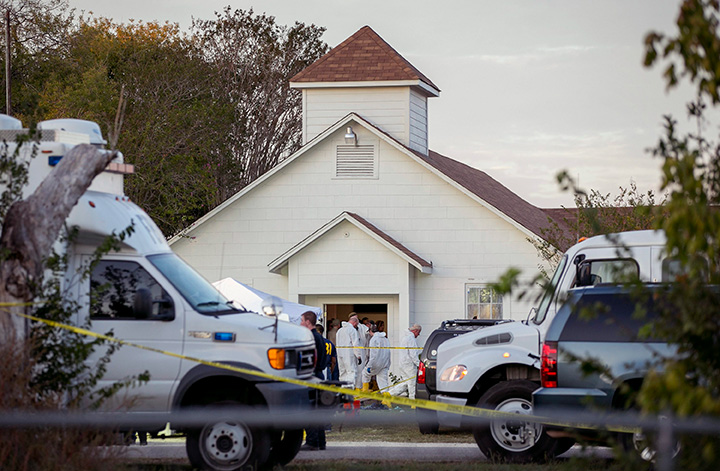The bodies weren’t even cold when the predictable chorus of celebrities and media personalities started nattering about “gun control” as the answer to violence.

If only there was gun control, this chorus argues, then the 26 worshipers slaughtered at Sutherland Springs Baptist Church last weekend would be back in the pews on Sunday.
Within a couple of days, the narrative fell apart. The gun used by the murderer, whom I’m opting not to name in this column, was unlawfully owned.
Just five years ago, the killer, at the time in the United States Air Force, was convicted by court-martial of assaulting his wife and child. A number of reports have said his in-laws’ membership in the Sutherland Springs Baptist Church may have motivated his actions, rather than ideological reasons (though it’s worth noting that he was a “vocally anti-Christian” atheist, according to a New York Times profile.)
After being given a “bad-conduct discharge” by the military, he was barred from owning guns. The problem is that his status as a “prohibited person” required reporting of his conviction to the Federal Bureau of Investigation by the air force. This didn’t happen.
READ MORE: Air Force lapse allowed Texas church shooter to buy guns
As a result, when he purchased four guns between 2014 and 2017 in Texas and Colorado, gun control had failed. This includes his acquisition of the semi-automatic AR-556 — referred to by know-nothing reporters as an “assault rifle” or “machine gun” in some coverage — that authorities have linked to the shooting.
He had, however, been denied a license to carry a handgun.

Get breaking National news
But wait, can’t anyone in the United States — certainly in Texas — walk into a store, buy a gun, and be on their merry way? No, yet this myth — one of many regarding gun ownership in the United States, and Canada, for that matter — persists in the media.
Most states use the National Instant Criminal Background Check System (NICS) to immediately process requests for firearms at the point of sale. Texas requires that firearms dealers directly contact the FBI. In most cases, the FBI would already have a record of convictions, but because military proceedings are handled separately, the system requires reporting by, in this case, the United States Air Force.
Someone convicted of domestic violence has no business owning a gun. This isn’t a radical concept, even to Second Amendment-supporting Americans: it’s already the law.
Knowing how many of America’s gun fatalities occur as a result of suicide or domestic incidents underscores the importance of this process working. How can anyone expect further gun control to be effective when government can’t even adequately uphold the current laws?
Had the process unfolded as intended, the killer wouldn’t have been able to legally purchase firearms. But I don’t think even those checks and balances should let anyone rest on their laurels. As we see time and time again, people who aren’t legally supposed to be armed still manage to get their hands on weapons — from illegally owned guns to homemade bombs to run-of-the-mill knives.
As the killer’s past demonstrates, the problem was him — not any of the guns he owned.
There has been less coverage, however, of the legally armed Texan who stopped the killer from claiming even more innocent lives than he did.
It was an instructor for the National Rifle Association — the entity labelled by liberal commentator Keith Olbermann a “terrorist organization” — that rushed the church killer, shooting him with precision between plates of body armour. This forced the killer to end his spree, run away, and ultimately shoot himself dead.
In Sutherland Springs, the NRA did what gun control failed to do: stop a mass shooter in his tracks.
The kicker, of course, is that when Stephen Willeford ran out of his home barefoot to stop the killer, he used an AR-15. The class of firearm routinely maligned by gun-grabbers was the one used to stop the Sutherland Springs massacre. No amount of gun control can stop a killer’s motivation to find tools to kill, but it does disarm those prepared to stop killers.
He was aided by another local, Johnny Langendorff, who drove Willeford in pursuit of the killer when he fled the scene.
These Good Samaritans prove what gun advocates have been saying for years — the person matters more than the gun.
As Prof. John Lott concludes in his 2016 book The War on Guns, background checks don’t reduce violent crime. And, for that matter, the idea that more guns increase crime and fatalities is also a myth, Lott says.
Those who believe more gun control must be the government’s answer to Sutherland Springs must be held to account for what might have happened without a legal gun owner across the street.
Andrew Lawton is host of The Andrew Lawton Show on AM980 in London and a commentator for Global News.


















Comments